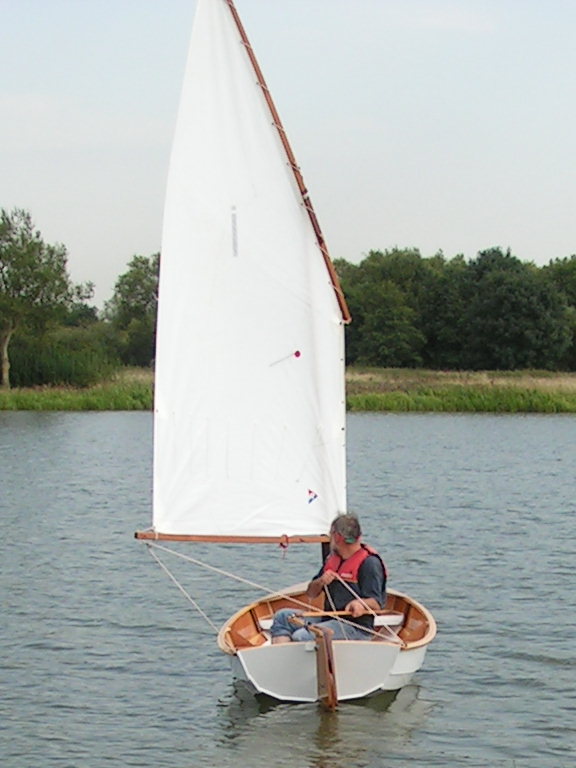Plans for dinghies, dayboats, sail and oar craft

Iceni 11-12 dinghy plans: a singlehander, home-build light weight balanced lug sail dinghy a little under 12 feet in length and around 11 feet on the waterline - an attractive, well mannered and undemanding to sail stitch and glue day sailer.


At around 11ft 9in and 4ft 9 in beam, the Iceni 12 is an eight plank - four planks each side - stitched seam balanced lug dinghy for the home builder, with recessed decking and side tanks as standard; sheer and freeboard are moderate for possible car topping without detracting from her character; and a well-proven rig of moderate proportions provides the drive. The topsides are well flared throughout, and the transom is well lifted to avoid drag under oars or sail, but still with enough bearing aft for a small outboard. The lines have resulted in a fast, dry, well-mannered craft that is exceptionally manoeuvrable with reassuring stability, both initially and on heeling. As a result of the underwater sections and flared topsides, she gains displacement very rapidly, maximum designed displacement being around 230 kg. Depending on layout, she is ideally suited to an adult with a couple of children, or to a husband and wife, or to the singlehander with an occasional crew - she is after all only a few inches longer than a Mirror 10 and the boat is easily dominated by the weight of a medium-sized helm. The Iceni 12 is a general purpose dinghy, but with the accent firmly on sailing. The 2 photos below together with the final one are of a very fine Spanish stitch and tape build courtesy of Jose Luis Martinez Viana.

Plans are on five A1 sheets with 22 A4 sheets of keyed construction detail and outline building procedure, with separate offset and hull panel details. Hull panels are nested for best ply use, as are bulkheads and decking. Details are also given for the cambered foredeck version.
Offsets are given too for building conventionally over moulds and a building frame with battened seam construction, or she could equally be built glued clinker over stringers in the bottom and bilge. The Megan in the photos below was built as an experiment in combining stitched seam construction in the bottom [4 mm doubled in the cockpit area] to avoid lands and glued clinker [4 mm] in the topsides for strength with light weight. This produces an exceptionally strong, light and attractive hull, but requires an experienced eye to ensure the top seams remain perfectly aligned as there is no building frame; there is not as much self-fairing ability with this method as there is with the completely stitched seam panels where the close butting edges ensure accuracy and alignment.


